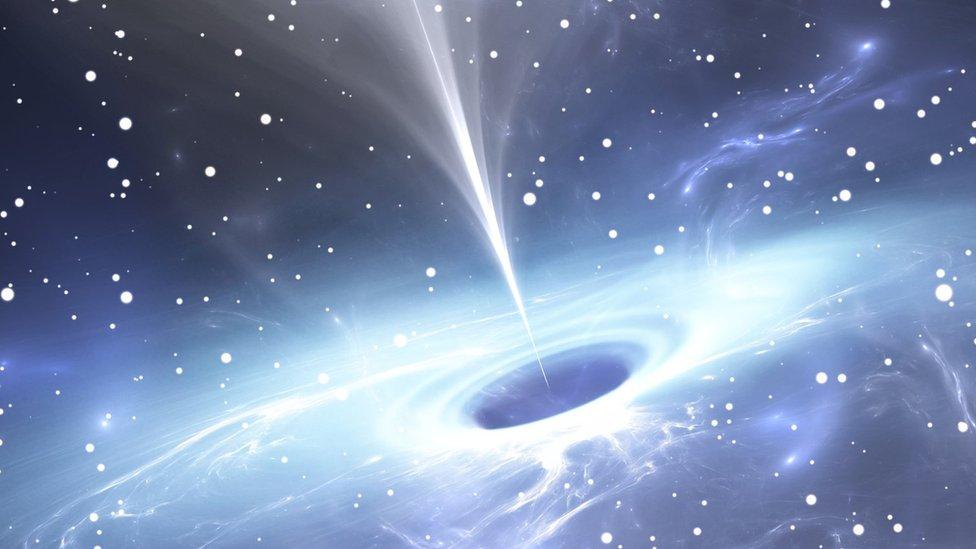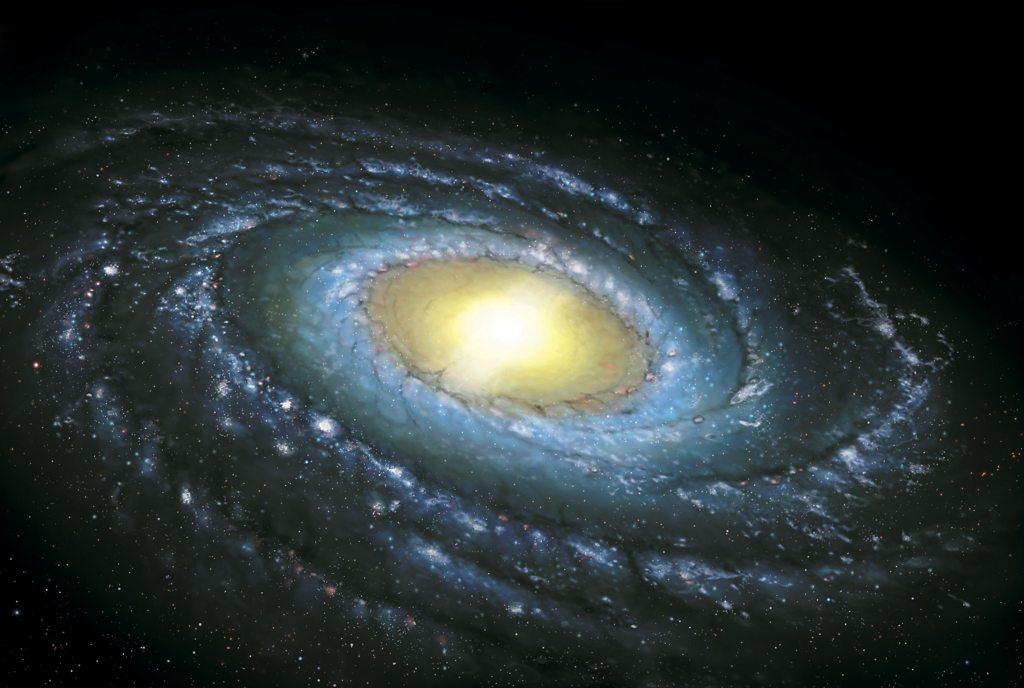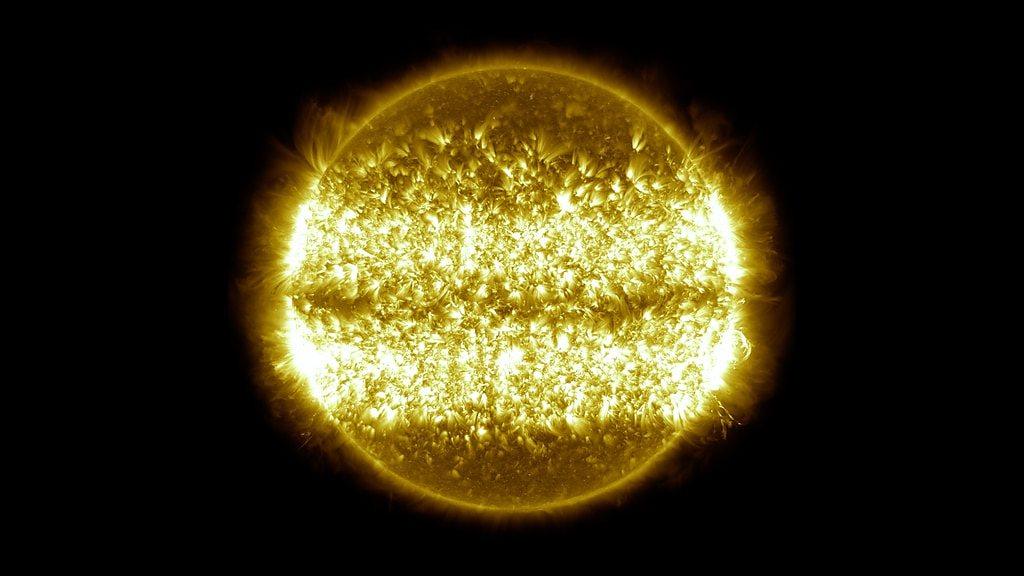'Monster' black hole eats one star per day
- Published
- comments

Here's what a black hole looks like
Astronomers have found one of the biggest black holes ever - and say it eats a normal-sized star every day.
Also, it is getting bigger.
Classed as the fastest-growing supermassive black hole in the universe, it's 34 billion times the mass of our own sun and is the second-largest ever discovered.
Research shows that the black hole is growing at a rate of 1% every million years, which is a lot when it's already so big.
The black hole, which has been named J2157, is 1.2 billion light-years away from Earth, so there's no need to worry, it won't be gobbling up our sun or solar system any time soon.
A light-year is the distance light travels in one earth year (it's a long way - about 9 trillion km/6 trillion miles). So when astronomers look at this black hole they're actually seeing how it appeared far in the past.
What is a black hole?
Black holes are formed when a dying star collapses inward under the pressure of its own weight. This leads to something called a supernova, a star's extremely powerful explosion.
Black holes are places in space where the pull of gravity is so strong that even light can't escape it! This is what makes them hard to see. At the centre of a black hole there's something called a quasar, which is powered by so much activity going on near to the black hole. The light of a quasar can be 600 trillion times brighter than our sun and this is what astronomers look out for when discovering black holes.
Christopher Onken, an astronomer at the Australian National University which first discovered the black hole, says it's hard to study how its gravitational pull influences the rest of the universe because of how far away it is.
"We're seeing it at a time when the universe was only 1.2 billion years old, less than 10% of its current age."
Seeing the black hole from so many years ago, means that if it were possible to see it up close it would be even bigger today and it's already being viewed at a size that is 8,000 times more massive than the supermassive black hole found at the middle of our own galaxy, the Milky Way.
"If the Milky Way's black hole wanted to grow that fat, it would have to swallow two thirds of all the stars in our galaxy," Onken said.
WATCH: What happens when a star gets too close to a black hole [Animation: Nasa's Goddard Space Flight Center]
Studying a big black hole so far away requires a very large telescope, and the European Southern Observatory has one in Chile in South America.
"We knew we were onto a very massive black hole when we realized its fast growth rate," said team member Dr Fuyan Bian, a staff astronomer at ESO.
"How much black holes can swallow depends on how much mass they already have. So, for this one to be devouring matter at such a high rate, we thought it could become a new record holder. And now we know."
- Published2 July 2020

- Published28 June 2020

